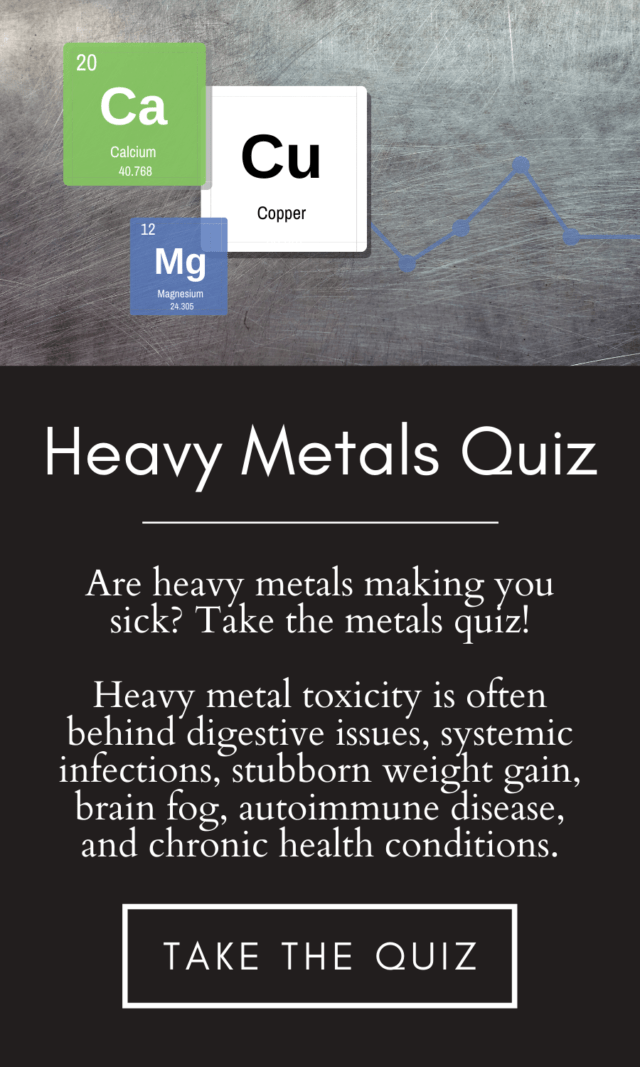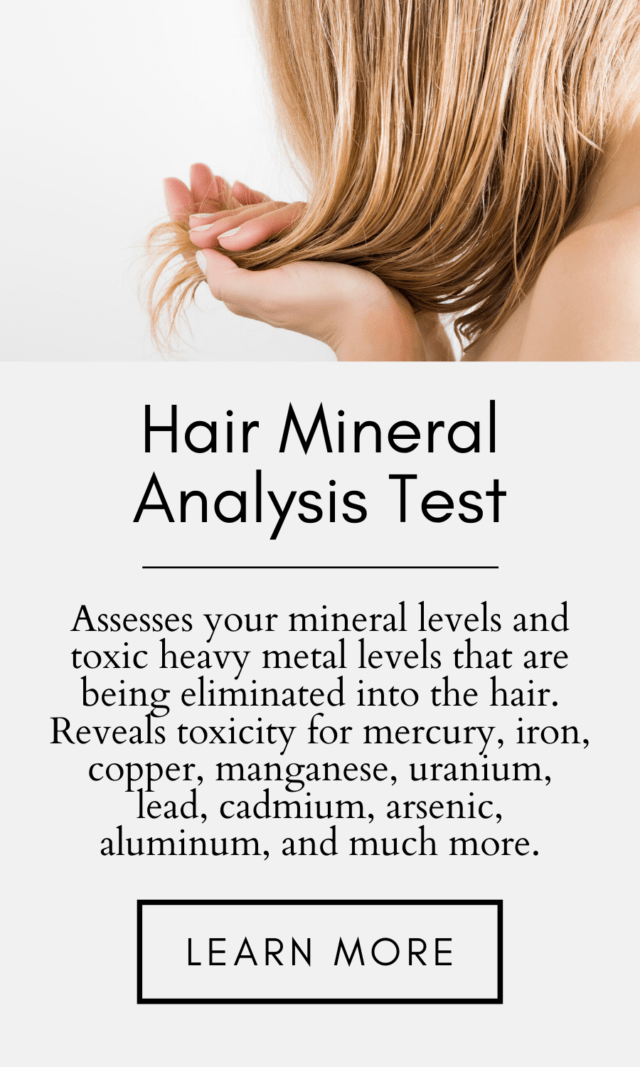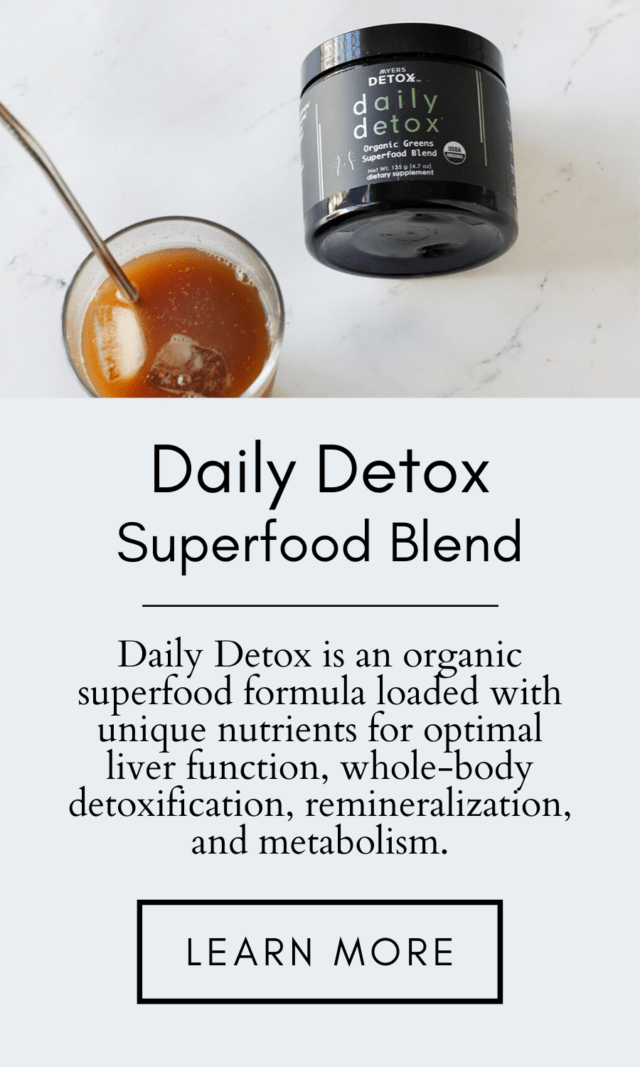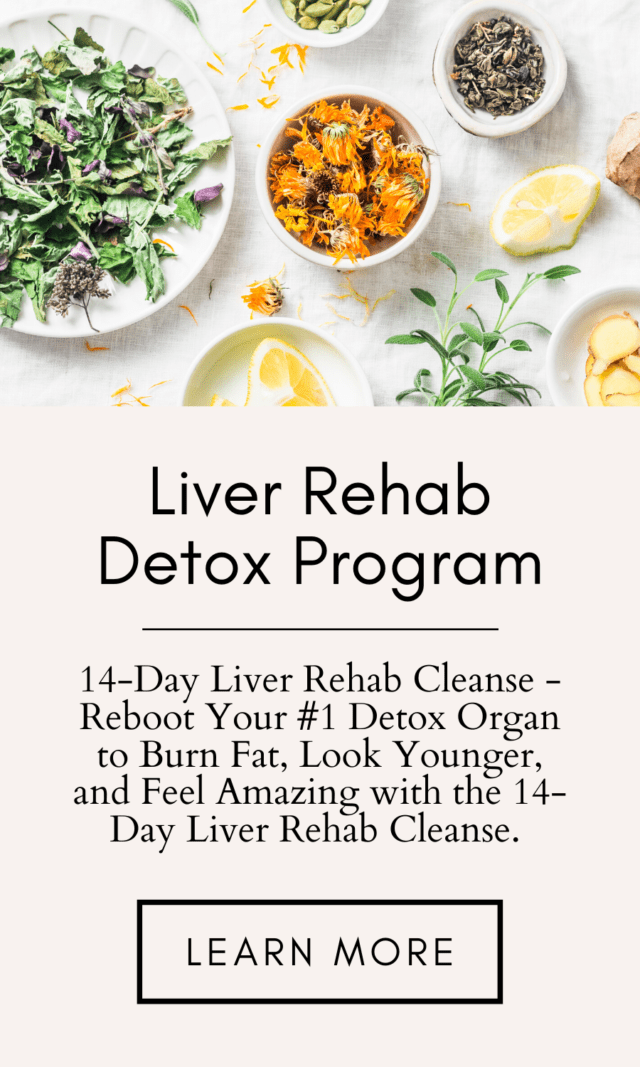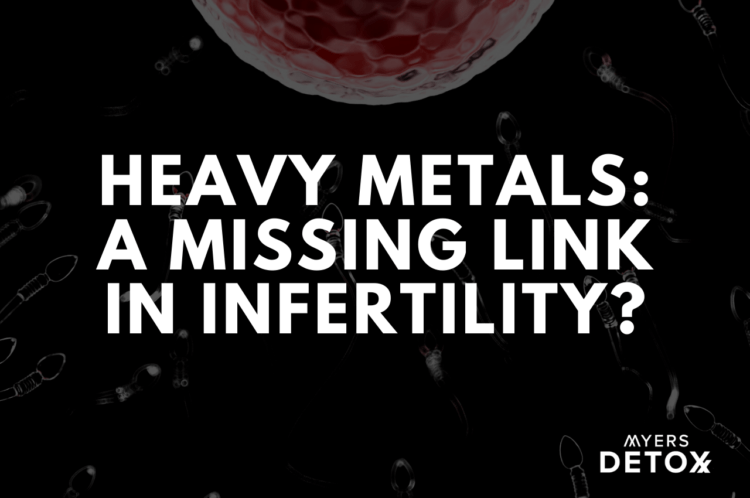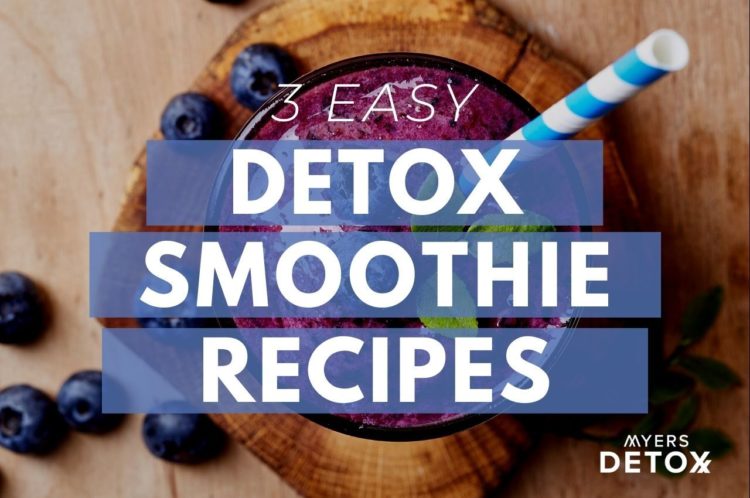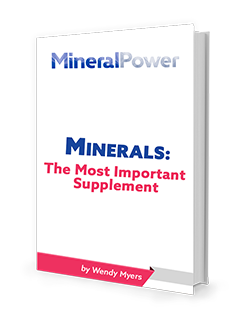Tin Toxicity
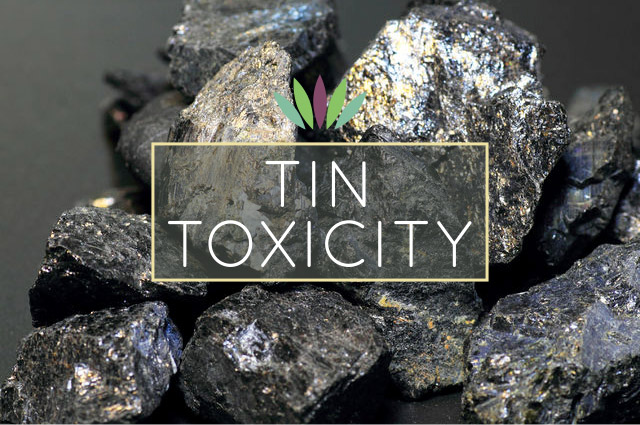
Many people today suffer fatigue from tin toxicity. Our food is canned in it, our drinks are packed in it, and our cookware is made of it. It’s in our soil and our air, even our toothpaste! While you can’t eliminate your exposure to it entirely, you can take steps to mitigate your exposure, detox from everyday living, and help you maintain a clean and healthy lifestyle.
How You Are Exposed to Tin
Tin is found naturally in the environment at low levels. As a result, we can never completely avoid our exposure to it (5). But the consumption of canned foods and/or beverages is, by far, the biggest sources of toxic tin exposure in modern society. And while food containers that contain tin usually have a very fine layer of lacquer applied to prevent the tin from leeching into your food or drink, that “protective layer” may actually do more harm than good.
This layer is often loaded with Bisphenol A (or BPA), a chemical that can mimic human estrogen and is linked to both breast cancer and early puberty in women. In fact, when the Environmental Working Group tested canned food bought across America, they found BPA in more than half, and at levels they noted as being, “200 times the government’s traditional safe level of exposure for industrial chemicals” (10, 13). In short: consuming canned goods may put you at greater risk of BPA ingestion than drinking from plastic water bottles!
But the danger doesn’t end there. That “protective” layer may actually be compromised, allowing tin to dissolve into the can’s contents especially when the foods and drinks are acidic (1). And when the lining isn’t present – meaning plain, uncoated, internal surfaces are used for canning – the tin content in the food is increased and the toxicity risks even greater (8).
The good news is that our consumption of canned goods is reducing in favor of fresh or frozen produce. And the decline is only expected to continue! (11, 12)
But aside from canned goods, you are still exposed to tin a variety of ways. More specifically, tin is present in such widespread sources as (3, 4, 5, 7):
- Canned/tinned foods and juices
- Air
- Soil
- Landfills
- Asparagus (added to some asparagus to improve its taste)
- Brewer’s yeast
- Cereal grains
- Coloring agents
- Dairy
- Dental amalgams
- Dyes
- Food additives
- Fungicides
- Some herbs
- Licorice
- Meat
- Occupational exposure – tin mines, smelting
- Factories that make or use tin
- Seaweed
- Seawater
- Soaps
- Seafood (especially shellfish)
- Lining of metal beverage cans and food containers
- Some toothpaste
- Stabilizers in plastics, moluscicides, and miticides
- Water collected from galvanized (tin) roofs
- Water (improperly filtered)
- Vegetables
As you can see, just because you avoid canned foods and drinks, you will still find yourself exposed to tin.
Of course, the best way thing you can do to reduce your exposure to tin is to reduce – or better yet, eliminate – the number of canned products you eat or drink (5). But canned goods are not your only source of toxicity. That’s why it’s crucial to regularly detox this dangerous element before it does serious harm to your health!
Symptoms of Tin Toxicity
Considering the fact that the biggest source of tin exposure is ingestion of canned/tinned foods, most of the symptoms of toxicity are, not surprisingly, related to gastrointestinal problems.
Some of the symptoms associated with tin toxicity include (2, 3, 4, 6, 7, 8):
- Abdominal pain
- Breathlessness
- Cholangitis of the lower biliary tract
- Chronic Fatigue Syndrome
- Convulsions
- Cough
- Decreased pulmonary function
- Diarrhea
- Dizziness
- Dyspnea (breathing difficulty)
- Eye irritation
- Eye soreness
- Fatigue – main symptom
- Hallucinations
- Headaches
- Heart palpitations
- Kidney problems
- Liver problems
- Nausea
- Peripheral neuropathy
- Psychotic behavior
- Severe sweating
- Skin irritation
- Skin rash
- Stannosis (benign pneumoconiosis)
- Stomach complaints
- Tremors
- Vomiting
The symptoms of tin toxicity are in direct correlation to a lack of the healthy minerals they replace. Toxic elements, like tin, replace nutrient minerals in enzyme binding sites. When this occurs, the metals inhibit, over-stimulate, and otherwise alter thousands of enzymes. An affected enzyme may operate at 5% of normal activity. This may contribute to many health conditions. Toxic metals may also simply deposit in many sites, causing local irritation and other toxic effects.
Toxic metals may also replace other substances in other tissue structures. The replacement weakens these tissues, such as the arteries, joints, bones, and muscles. Tin replaces a variety of elements, including calcium, iron, and bismuth in vital enzyme binding sites. This is why maintaining a healthy, balanced system is so important!
Health Conditions Caused by Tin Toxicity
The main problem with tin is that it causes fatigue. Tin destroys the charge on the outside of your mitochondria – your cell’s powerhouses that make your body’s energy. If there is no charge on the outside of the mitochondria, they cannot make adequate levels of energy. Tin toxicity is one of the major players in chronic fatigue syndrome.
A primary concern with tin is that overexposure may damage the nervous system and cause psychomotor disturbances (6). It’s also believed that tin affects impairs brain function by interfering with neurotransmitters. (1)
Additional negative health conditions resulting from tin toxicity include (4, 6, 8, 9):
- Chromosomal damage
- Convulsions
- Depression
- Adverse gastrointestinal effects
- Forgetfulness
- Hallucinations
- Headaches
- Immune System malfunction
- Liver damage
- Nervous system damage
- Pneumoconiosis (Stannosis)
- Psychotic behavior
- Shortage of red blood cells
- Sleeping disorders
- Tremors
How to Protect Against Tin Exposure
An antagonist is an element that can help to push or detox tin out of the body. The following elements work as antagonists of tin (3):
- Iron
- Calcium
- Copper
- Chloride
- Vitamin B2
- Vitamin E
- Bismuth
- Zinc
Detecting Tin Toxicity
If you think you’ve been exposed to this pollutant and may have high levels of it in your system, I recommended some testing to determine your level of exposure.
First, a Hair Tissue Mineral Analysis (HTMA). HTMA testing measures heavy metal and mineral concentrations in your hair, which is one of the most common places that heavy metals like to hide. It’s a good way to get a highly accurate snapshot of what’s going on in your body without invasive procedures or expensive scans.
The important thing to look for here is not just tin at its face value on your test, but also its relation to other minerals in the body. You can see tin toxicity by looking at tin’s ratios to other minerals on a hair mineral analysis.
The HTMA testing process is simple (you don’t even need to leave your house). You get a digital kit sent to your email, then you send in your hair sample, and get your results within a few weeks. Testing is both accurate and comprehensive –– an HTMA test will give you information about a wide variety of heavy metals, including tin.
Once you have your HTMA test results, you can look at them with a trained practitioner and come up with a personalized plan to support your body’s natural detoxification.
A few things to note when detoxing tin:
- Tin levels should be zero. There is no biological use for tin in the body.
- Hair mineral analysis will help determine the amount of tin stored in the body’s tissues.
If you think you’ve been exposed to health hazards like tin and it may be hiding in your system, order a Hair Tissue Mineral Analysis. From there, you can plan your next steps to reclaim your vitality.
Takeaway
If you are concerned about tin exposure, an HTMA is a great place to start. It can give you the information you need to address the root causes of physical and mental health issues. If you suspect you have a build-up of toxins or a micronutrient imbalance, or you have unexplained symptoms like brain fog, weight gain, fatigue, or hair loss, you will certainly benefit from getting an HTMA.
After a long search and after having worked with multiple labs, I send all of our hair samples to an internationally-recognized lab that is a world leader in HTMA laboratory services. They’ve run more than 100,000 tests, and they process hair samples without washing them, which sets them apart from many other labs (washing a sample removes minerals, which leads to inaccurate results for proper interpretation).
If you think you may have toxin build-up or a mineral imbalance and you want definitive, accurate data on your health, you can order your HTMA here.
*These statements have not been reviewed by the FDA. A Hair Mineral Analysis (HTMA) is not intended to diagnose, treat, cure, reverse, or prevent any disease. It is not intended to replace any other medical test(s) that may be prescribed by your medical doctor.
Click Here for References+
1. Group, Dr. Edward. “Toxic Metals: The Health Dangers of Tin”. Global Healing Center. Pub: Jan 10, 2013. http://www.globalhealingcenter.com/natural-health/toxic-metal-health-dangers-of-tin/
2. Kinship KA. “Toxicity of Tin and its compounds.” Department of Health and Social Security, London. Adverse Drug React Acute Poisoning Rev. 1988 Spring;7(1):19-38. http://www.ncbi.nlm.nih.gov/pubmed/3291572
3. Acu-Cell Cellular Nutrition. “Health Benefits & Toxicity of the Element Tin, and its Effect on Adrenals, Depression and Fatigue.” http://www.acu-cell.com/tin.html
4. Occupational Health & Safety Administration (OSHA), United States Department of Labor. “Tin Oxide (as Sn) (Total Dust)”. https://www.osha.gov/dts/chemicalsampling/data/CH_272000.html
5. Agency for Toxic Substances and Disease Registry.”Public Health Story for Tin.” August 2005. http://www.atsdr.cdc.gov/phs/phs.asp?id=541&tid=98
6. National Organization for Rare Disorders (NORD). “Heavy Metal Poisoning.” Years published 1989, 1991, 1998, 2006. https://rarediseases.org/rare-diseases/heavy-metal-poisoning/
7. R D Kimbrough. “Toxicity and health effects of selected organotin compounds: a review.” Environ Health Perspect. 1976 Apr; 14: 51–56. http://www.ncbi.nlm.nih.gov/pmc/articles/PMC1475111/
8. Blunden, Steve and Wallace T. “Tin in canned food: a review and understanding of occurrence and effect.” Food Chem Toxicol. 2003 Dec;41(12):1651-62. https://www.ncbi.nlm.nih.gov/pubmed/14563390
9. Lenntech. http://www.lenntech.com/periodic/elements/sn.htm
10. Alter, Lloyd. “BPA Danger may be greater from Tin Cans than Water Bottles.” TreeHugger.com. April 17, 2008. http://www.treehugger.com/corporate-responsibility/bpa-danger-may-be-greater-from-tin-cans-than-water-bottles.html
11. Wong, Venessa. “In Pursuit Of ‘Freshness,’ Americans Buy Fewer Canned Foods.” Bloomberg Business. October 22, 2013. http://www.bloomberg.com/bw/articles/2013-10-22/in-pursuit-of-freshness-americans-buy-fewer-canned-foods
12. Buzby, Jean C., Biing-Hwan Lin, Hodan Farah Wells, Gary Lucier, and Agnes Perez. “Canned Fruit and Vegetable Consumption in the United States: Report to Congress.” Economic Research Service and U.S. Department of Agriculture. September 2008. http://www.ers.usda.gov/media/184291/ap032.pdf
13. Environmental Working Group. “Bisphenola A – Toxic Plastics Chemical in Canned Food”. March 5, 2007. http://www.ewg.org/research/bisphenol

